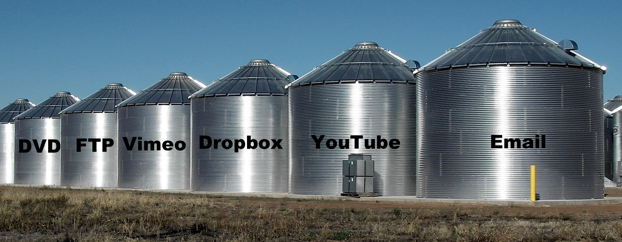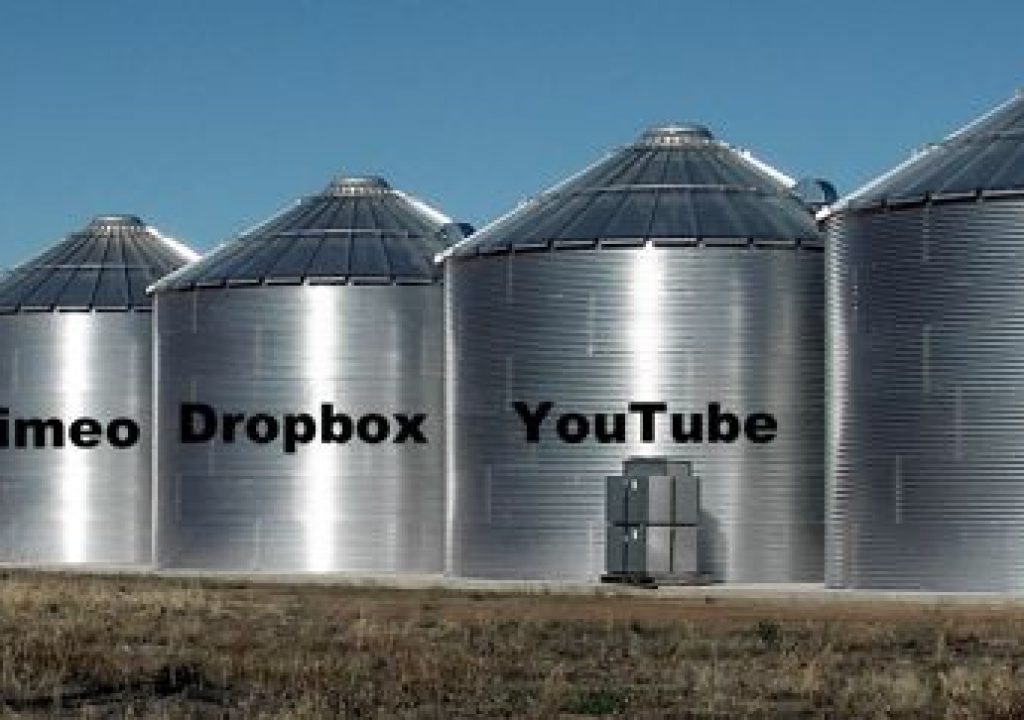Think back to the last project where you shared media for a production with your team, clients, or other stakeholders. If you are like most people, it was probably a pretty fragmented process.
Project media tends to get distributed among a wide variety of different tools. Scripts, storyboards, call sheets, releases, client assets, audio, and of course video will be sent out in a variety of different ways. Valuable project assets end up distributed among email, FTP servers, Dropbox, Evernote, Google Drive, Vimeo, YouTube not to mention review DVDs.

This creates version control issues, where you are never sure if someone is looking at the same thing you are. This confusion can cost time, money, and it can strain relationships. It also presents a security risk. The more places the material resides, the greater the chance that it will end up in the wrong hands or be released to people before it's ready.
But that is only a small part of the problem. The bigger issue is that feedback about what you are sharing ends up fragmented. For example, with review and approval for post production, feedback get scattered between in-person review sessions, phone calls, and email threads.
The emails you get back when share videos via Vimeo, YouTube, and FTP can be particularly problematic. Feedback easily gets lost in long and confusing email threads. When this happens, it's hard to keep a mental record of what needs to be done next to move the project forward.

Part of this comes from the fact that email lacks context. Typically, collaborators are asked to provide this context by adding time-codes to their feedback, but this doesn't always happen. The other part of the problem with email is that it's unstructured. Anyone can reply to a comment, and anyone can jump into a thread at anytime.
If you are lucky, someone tries to keep things organized by logging all of this feedback in a spreadsheet so that there is a singular record of the feedback. Even then, people have to bounce back and forth between the spreadsheet and the video to see what needs to be done. For many, things are even more complicated.
The bottom line is that when communication about project media is separated from the files themselves, it becomes difficult to create a universally agreed upon record of what needs to be done next in order to move the project forward.
With all of these communication roadblocks, it becomes easy for miscommunication to create re-work and for deadlines to slip. This is a problem in a world where competition is increasing, budgets are shrinking, and clients are demanding faster turn-around times.
Any of this sound familiar?
It's kind of a funny thing. While the pace of software and hardware innovation in the industry has been accelerating, the way we work together hasn't undergone the same transformation. Now that our main creative tools are becoming less of a bottleneck, it's starting to shine a light on other bottlenecks in the production and post workflow.
My company, <a href=”http://www.screenlight.tv” target=”_blank”>ScreenLight</a>, offers a web-based video review and approval platform that solves this problem. It provides a simple, private and centralized way to share and get feedback on media during video production and post.
Getting started is quite simple. You create a project, upload some media to it, and invite your team and clients to provide feedback on videos and other project files. When you upload video files to ScreenLight, we immediately create high-quality proxies that can be viewed on virtually any device.
When you invite people to collaborate using ScreenLight, they only see the projects that you have explicitly shared with them, and they only have permission to do exactly what you want them to. These people can be invited to sign in with a username and password, or they can be invited to view media via a quick link that provides access without having to remember yet another password.
You can give each person on a project different permissions that reflect their role in the project. A project administrator for example can add new people to a project, while you may want some people to add feedback and view other people's feedback, and for others, you may only want them to view the videos. All of this is behind bank grade security, so you don't have to worry about unauthorized access to your unfinished projects.
As mentioned above, sharing is only part of the solution. The rubber really hits the road with providing feedback. As people view videos, they can type their feedback, which is automatically timestamped and marked on the timeline. As other people watch videos (or add feedback to any other type of asset), they can respond to comments that are already there. This can be great when there are differences of opinion, when you need additional clarification on requested changes, or when you want to explain why a particular editing decision was made and why you can't make a requested change.
Once you've got all your feedback, you can print out the comments so that you have a handy checklist of what needs to be done. Pretty soon we'll be adding the ability to export feedback as markers that you can add to the timeline in your favourite editing tool so that everything you need is close at hand.
Finally, we have designed the application so that people can use it on the desktop or on a wide variety of smartphones and tablets. This means that they can review media, anywhere and anytime that suits them. Best of all, they don't have to download an app to do this.
We've tried to separate ourselves from the pack of digital asset management and media asset management systems by focussing on simplicity. If the tool is too complex for clients to use, then it doesn't end up getting used and that's not good for anyone that's involved. ScreenLight offers the ease of use of consumer video tools like Vimeo, with the commenting and feedback functionality of SoundCloud.
Over the years since we launched we've helped thousands of video professionals and clients improve how they work together. Some of our initial hypotheses were right (email is a huge problem that isn't getting any easier to manage), and others around how to structure the workflow have needed course correction along the way.
We are just about to launch a completely redesigned version of the product that incorporates feedback from hundreds of in-depth interviews with customers and their clients. The biggest change is that we are moving from organizing everything around video playlists, to letting people share and get feedback on any type of file and organize it in whatever way they like. At the same time, we are adding more flexible ways to share project media.
Along the way, we've learned a ton about collaboration, running a business, marketing a small company, and getting things done. These are the same things many people in the business struggle with, and I've been making a point of writing about these things on our blog.
This post marks the start of my journey writing for Pro Video Coalition. I can't wait to share my thoughts on collaboration, marketing your production and post company, new tools to keep track of clients, pitches, proposals, etc. As we build and grow our business, we want to take you along the way and share all the great things we are learning. If there are any posts you'd like to see, or questions that you'd like answered, let me know and I'll be sure to write about it.
Thanks for accepting me as a member of your community.

